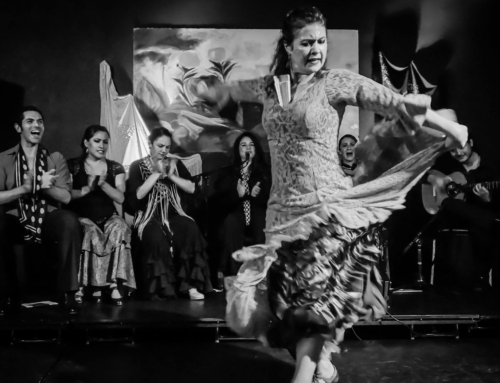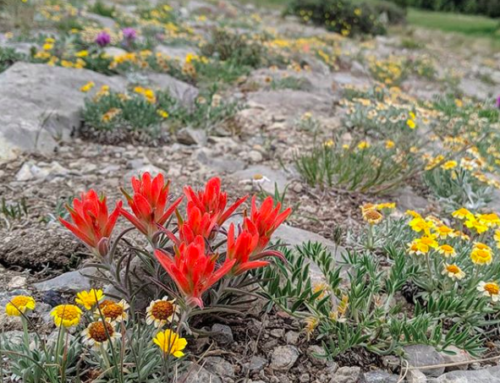No one person is the be-all end-all. Well, maybe your kids, or grandkids, or significant other are your world. But that’s not what I’m talking about. In the dance world, I’ve seen dancers flock to a single person and talk about that teacher/choreographer/director as if they are the “god” of their art form. I’ve actually heard dancers in a company use that word to describe their director. Yuck!–I find that absolutely disgusting.
Even brilliant, genius choreographers are not the be-all end-all. No one person has all the answers. And even if a teacher’s methodology rings true to you and has helped you grow immensely, we have to remember their style may not align with everyone nor is it the only style.
There’s no single right way to do dance. There are, however, wrong ways. Anything that is dangerous to dancers, for example, is not an okay way to run a company or teach a class (in my opinion). Someone like Elizabeth Streb may disagree, but that’s another can of worms, and at least her dancers know what they are getting themselves in to (hopefully).
Question Authority
If someone tells you their way of dancing is the only “right” way, you probably want to think twice about that. Their way may be the right way to execute their style, but another director may have a different aesthetic. Going back to safety, there are correct ways to move according to human anatomy so that we don’t injure ourselves. As dancers, we have to be as versatile as possible, and even as solo artists, we have to ensure we are making stylistic decisions based on what we want to see/express and not because we’re limited by technique or a narrow view of what dance should/can be.
When we put someone up on a pedestal as the be-all end-all, we’re diminishing our own value. A dance director/teacher may have more knowledge in the field, but we’re not leaving room for ourselves to develop our own take on dance if we view a single person as the “only way.” Yes, as a dancer in a company it’s our job to execute the director’s choreography and aesthetic as best we possibly can, whether we like that aesthetic or not. But outside of that company’s rehearsals and performances and our obligations to that company, there exists infinite possibilities of what dance can be.
Dancers develop their own styles over time, by investigating on their own, taking classes, taking what they like/need from experiences with various companies and teachers.
There are dancers that do study a single person’s technique/aesthetic, learning it to the T. These dancers often become repititeurs, a very necessary position for large companies. A repetiteur is “authorized to teach and rehearse choreography in the absence of the choreographer” (https://www.sarasotaballet.org/repetiteurs). There are dancers who dedicate their lives to someone else’s aesthetic, and that’s an important role in the dance world not to be overlooked. But, if a repititeur is going to be able to communicate their specialized aesthetic to dancers with other backgrounds, it helps to be familiar with other ways of dancing, to ensure they can fully translate their particular aesthetic to the dancers.
And dance itself isn’t the be-all end-all.
I think some of the best dancers and choreographers took a break from dance at some point. Or they are ready to leave it all behind at any moment, recognizing that dance is not everything. (Just Google “dancers took a break” and you’ll have plenty of examples).
I love dance. I wish everyone in the world danced (actually I think everyone does, whether they realize it or not). Dance brings me joy beyond anything else. I’ve joked with friends and said if I ever get married, my future husband will have to understand he’s my second husband, because I’m already married to dance. And yet, I have a lot of interests outside of dance. Other fields I am passionate about. Other ways I spend my free time. Yes, I go to the studio nearly every day to rehearse, or at the least I do some yoga and pilates to keep my body ready for dance. I read books about dance theory and history constantly. But if dance were to become ALL I did, and if I only practiced one style of dancing, I’m sure I would stagnate. What would I dance about?
My comparative literature studies continue to feed my perspective on dance. Writing poetry and creative non-fiction inspire my choreography. Other genres of music, hiking, visual arts……..so many things inspire me! A dance practice can include ALL of those things. Each field and investigation feeds the others, and deepens my experience of life, which in turn, deepens what I want to say through dance.
Any company/school/person that says you should not study other arts or with other people would make me very wary. As long as I can correctly execute the work of that company, other endeavors should only deepen my capacity for that company. I had a very narrow view of what flamenco “should” be, and thanks to my experiences at YoungArts, I realized how much more it could be, beyond the narrow view I had initially been taught. YoungArts was the first time I studied with a teacher outside of my hometown, and the first time I worked with musicians and artists of other genres. It was mind-blowing! Yes, we need to know our own art form inside and out (and never stop learning about it), but collaborating with other artists and studying other techniques or forms only expands our artistic possibility and informs our dance practice. We can’t dance about dancing (well, we can, but there’s so much more we can dance about too, and that will resonate with an audience not composed of professional dancers).
This blog is, as many of my blogs are, spurred by conversations I’ve had recently. Talking to young dancers who are discouraged from dance because a company or person is telling them that dance has to be this or that. Or that they should not take class with so-and-so or should not spend time practicing any other arts other than dance. It breaks my heart to hear that, and to hear their frustrations and discouragement. My advice is to go where their interests lead them. Again, things are never that simple. If someone truly wants to dance professionally, full-time, they will have to make sacrifices in other aspects of their life, but that’s a decision someone can only make for themselves by deciding what’s most important to them in their life.










Leave A Comment